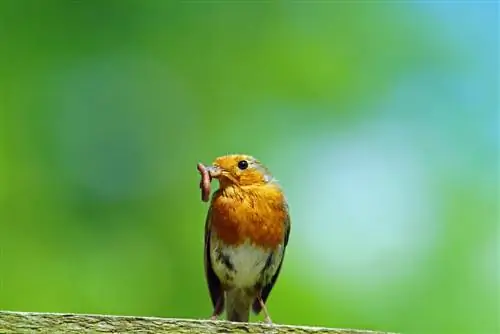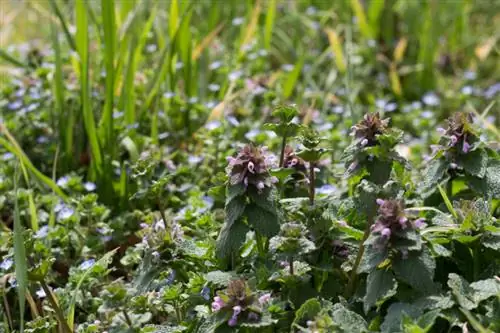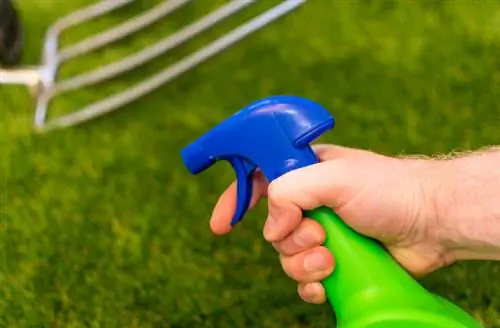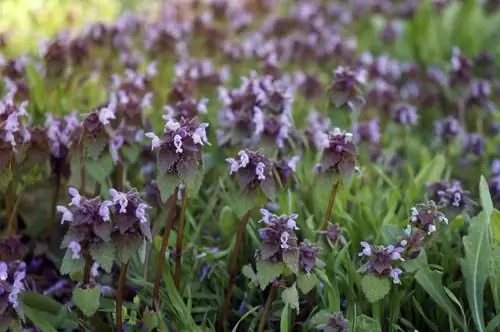- Author admin [email protected].
- Public 2023-12-16 16:46.
- Last modified 2025-01-23 11:22.
In every garden where fruit is grown, sooner or later maggots appear. An annoying nuisance for self-caterers and allotment gardeners. For the species that do not live very differently, there are also few different control methods.

How can you effectively combat maggots in the garden?
To combat maggots in the garden, you should collect infected fruits, stretch insect protection nets over plants, set up traps, lay out soil protection fleeces and encourage natural predators. These methods reduce the pest population effectively and sustainably.
Which types of maggots are relevant in this country
In our latitudes there are only a handful of types of maggots that occur frequently and can cause significant damage. Only the insect larvae of dipterans, which primarily include fly species, are referred to as maggots. The following are particularly relevant to local garden culture:
- Cherry fruit fly
- Cherry vinegar fly
- Walnut fruit fly
The cherry fruit fly, the cherry vinegar fly and the walnut fruit fly have relatively similar lifestyles and infestation cycles as tree and shrub fruit pests. All have a one-year life cycle and can therefore cause recurring problems for years.
The following measures are generally recommended for combating:
- Collecting and removing all infected fruits
- Spanning trees/shrubs with insect protection nets
- Installing traps
- Lay out floor protection fleece
- Natural predators
Collecting and removing infected fruits
Since the maggots are in the fruits and sometimes pupate there, harvesting and picking them up from the ground is a first, direct and logical way to contain them. Do not dispose of the fruits in the compost, where the maggots can develop and overwinter, but in organic waste.
Covering the plants with insect protection nets
This method is very effective, but also quite time-consuming for larger trees. It is mainly used in agricultural fruit growing. However, if you are dealing primarily with cherry vinegar flies in smaller berry bushes, it can be a viable solution. Due to the tight mesh of the nets, the adult flies cannot get through and are effectively prevented from laying eggs.
The flight time of the identified pest species should of course be taken into account here. Accordingly, set up the nets in good time. Yellow boards can also help with “monitoring” (€6.00 on Amazon).
Falling
Yellow panels, on the other hand, are less useful as traps, their catch rate is simply too low. Other traps such as pheromone traps or vinegar water and dishwashing bottles hung in bushes and trees can at best curb the infestation somewhat and reduce the mating rate. However, they are well suited for inventory control and subsequent, adapted control measures.
Floor protection fleece
This method is very effective because it prevents pupated maggots in the soil from hatching and can significantly slow down the development of another generation of pests. Place the fleece under a tree or shrub that was infested last year before the pest hatches. It keeps the hatching imagos on the ground and can also kill them in hot weather. However, the method is of no use for cherry vinegar flies because they overwinter as adult flies and not as pupated maggots in the soil.
Natural predators
The targeted use of beneficial insects makes sense, especially against cherry vinegar flies and cherry fruit flies. Parasitic wasps, birds such as swallows and swifts, ground beetles, but also free-roaming chickens that peck the maggots out of the ground are helpful pest decimators.






